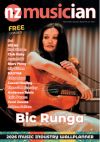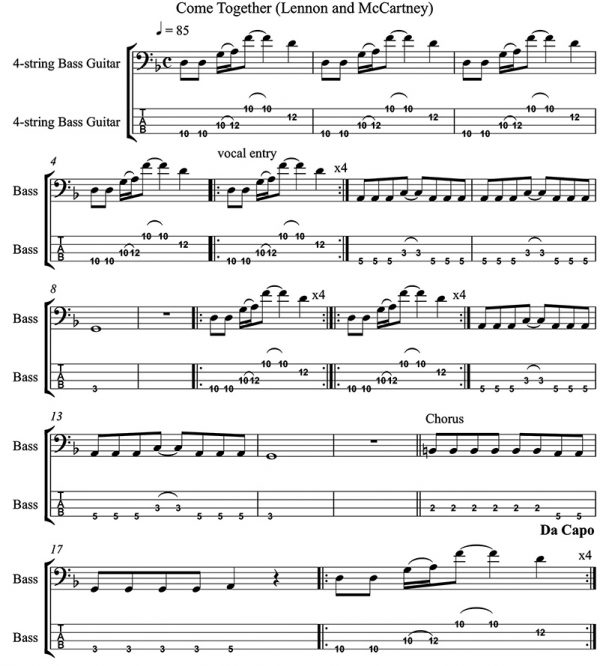Deep Thinking: Come Together Over A Classic
Deep Thinking: Come Together Over A Classic
Come together over a classic. After a few Deep Thinking articles, in which I’ve talked about the theoretical issues of bassline building from scratch (i.e. new songs needing a bassline), I thought it might be fun to dip into a classic.
‘Abbey Road’ by The Beatles was released in 1969 and was the last album the band recorded, although ‘Let It Be’ was the last album they completed and was released before their break-up in 1970. ‘Abbey Road’ opens with, IMHO, a stunning track written by John Lennon called Come Together with a highly memorable bassline played by Paul McCartney. It is a relatively simple line, mostly using the minor pentatonic scale (root note, minor 3rd, 4th, 5th and flat 7th) but it uses almost the whole fretboard up to the 12th fret.
The central riff starts on low D on string four at fret 10. You could play the riff using all fingers, but I find it easiest (and I would bet Paul did it this way) by ‘barring’ across fret 10 with your fretting index finger. In this way it’s easy to play the low D and the high F that follows later. All the other notes you need are then played with the rest of your fretting fingers, except for the fourth one (the little finger).
So, the first two D notes are followed by a hammer-on G to A on frets 10 and 12 on string three before you play a high F on string four at fret 10. The riff ends with a D at fret 12, string 2. If you listen carefully to Come Together there is a slight glissando as Paul slides down a little from the D. The introduction repeats this riff four times before the vocal starts, and you play the riff another four times.
For the next section you move your fretting hand down to fret 5 on string 4 (A) and fret 3 on string 3 (C) repeating the new riff twice before finishing this short verse on low G at fret 3 on string four. After a bar rest following the G, you repeat the whole section before playing the actual chorus that is B dropping to A in quavers, or eighth notes, and ending on a crotchet A. You then play the main riff four times before starting the next vocal verse. There is an instrumental verse on keyboard and guitar that follows the same progression but, overall, the song is very simple and you shouldn’t have any problems playing it.
Paul would have used a pick, but I’ll leave you to grapple with that issue! One thing I have always wondered about is the sound he gets on the whole album. It is very deep and clear and he gets this when he is playing above fret 10. I think he was using his Rickenbacker 4001, and I’m sure some of you may disagree and say it was his Hofner. Either way, I have managed to get that sound out of my Wal 5 string and my flat wound jazz in the studio, but never quite get there live. Quincy Jones (who I admire greatly) has been highly critical of Paul’s playing. Maybe he hasn’t heard ‘Abbey Road’! Have fun!
Dr. Rob Burns is an Honorary Associate Professor in Music at the University of Otago in Dunedin. As a former professional studio bassist in the UK, he performed and recorded with David Gilmour, Pete Townsend, Jerry Donahue, Isaac Hayes, James Burton, Ian Paice and Jon Lord, Eric Burdon and members of Abba. Rob is currently a member of Dunedin band, The Verlaines and is on three new progressive rock albums released in the UK in 2020 and 2021. There is a further album available on Seelie Court Records (UK) that Rob played on when he was 16.) with a second one released in December 2021. A live album from his teens in the 1970s was released in May 2022 and is now available on vinyl.

